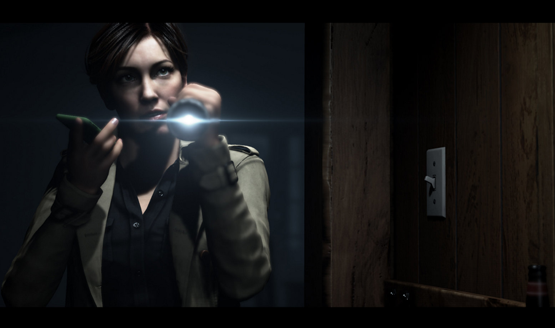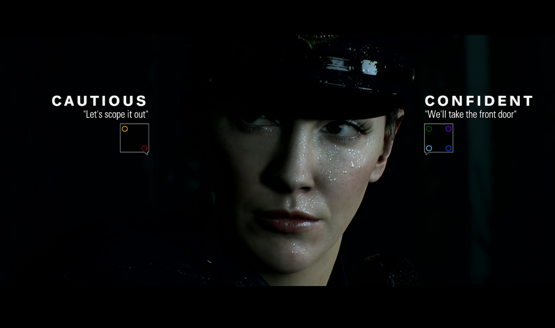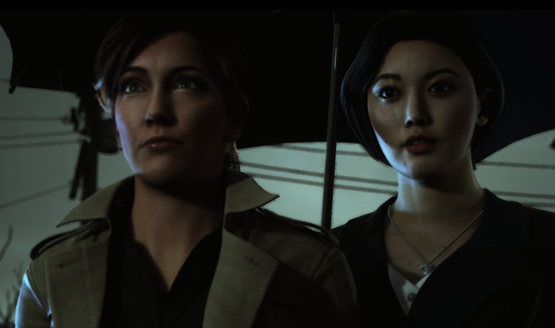Supermassive Games made a name for themselves with Until Dawn, a choice-based cinematic masterpiece that featured amazingly lifelike animation and a creepy horror story. What made it even more intense was the knowledge that any of the main characters can die, so it feels like every choice matters. Supermassive returns with a similar choice-centered game in Hidden Agenda, a crime thriller that’s one of the latest games in Sony’s PlayLink initiative.
PlayLink, for the uninitiated, is a feature that lets players use their smartphones as a controller for the game, commanding the use of unique second-screen features and generally making it easier for up to six players to all play a game together. Jackbox has been doing this for years with their party games, but PlayLink requires a specific app for each game and everyone needs to be on the same Wi-Fi connection as the PS4 for more nuanced control. If you told me a narrative crime thriller could be the basis of a party game, I’d have said you were dead wrong, but here we are.
Ups and Downs of PlayLink
Hidden Agenda’s biggest strengths and weaknesses come from it being tethered to the PlayLink initiative. You need a phone to play this game. There’s no getting around that and playing a solo playthrough with a controller (which would be completely doable). You can’t outfit some players with controllers and put others on phones. Every single player needs a phone with the Hidden Agenda app connected to the same Wi-fi that the PS4 is on. Coordination for this with larger groups can be more trouble than it’s worth, and that’s part of the reason our review is so late.
Once everything is set up though, it’s interesting to see everyone get so involved in the story. Whether you’re playing cooperative or competitive, Hidden Agenda creates a discussion around the plot and every single decision in the game. Competitive adds the twist of certain players being given a hidden agenda on their phone screen where they have to try to sway the group into certain decisions to make something happen and come away with bonus points at the end. It’s a cool idea in theory, but the execution leaves something to be desired. I’d just as soon play it cooperatively and treat it as a choose-your-own-adventure movie with friends.
And movie it is. Until Dawn, though very narrative and choice focused, allowed players to move the character around. So did Heavy Rain, Beyond: Two Souls, and every Telltale game. The nature of Hidden Agenda as a PlayLink title means you’ll be watching glorified cutscenes and periodocally choosing how to respond to certain situations. This static and non-interactive nature makes the terrible animations throughout the game seem odd. Why does it need to run in a game engine that can’t get a character to hold a phone at a realistic distance from his face? Faces are awkwardly animated, movements are stiff, and transitions between the various choices tend to stutter quite a bit. Screenshots may look great, but there’s some sort of hidden agenda in motion, and it’s not to make the game look good. There are even some continuity errors based on the choices. At one point in one of my playthroughs, a character is smothered with a chloroform rag in their car and then later says, “I don’t know, someone must have drugged my drink,” when asked about the missing time.
Party Thriller
Hidden Agenda is only about two hours long. A shorter game means Supermassive had an easier time developing the vast web of choices (one of my biggest issues with Until Dawn was how little your decisions really mattered once you played through multiple times), and judging by the trophy list, there are quite a few different outcomes. It’s also great for its intended party game style, where you can finish it in a single evening without needing to checkpoint and get everyone together again later. But as with any choice-based narrative game, completing the story once makes future playthroughs mean less. There’s less surprise over what it means to select one decision over another, and gathering a mixed group of friends–that is, some that have played it and some that haven’t–means discussions are much less interesting about potential outcomes because some players already know how things play out.
Replayability is supposed to be where competitive comes into play, but most people that play party games are looking for a quick and fun gaming fix, rather than an intense and invested gaming session going through a crime thriller multiple times. It’s here that Hidden Agenda lies at odds with itself. On the one hand, it’s a relatively interesting crime thriller that could have really benefited from a longer run time and more character development. On the other, it’s a party game, complete with goofy “party game narrator” voice that comes in periodically and asks the group questions about things like “who’s the most trustworthy?” or “who is the calmest under pressure?” in order to set up who gets to make certain decisions. It’s tough to get into a dark and gritty drama when a game show host is saying “That’s the end of part one of Hidden Agenda! Grab a drink, take a break, then swipe the box when you’re ready for part two!”
Forced into Sony’s PlayLink corner, Hidden Agenda simply doesn’t fit, and would have been better served as a full game release mirroring the likes of Until Dawn. Supermassive has already proven they could do a cinema quality narrative adventure with great length and animations, so Hidden Agenda ends up seeming like a step backwards, all to fit itself as a party game. The truth is that Supermassive have worked on five games since Until Dawn, and not a single one of them is a typical PS4 release (four PSVR games and a PlayLink title).
Hidden Agenda has all the trappings of a Supermassive game, but its potential is cut short as Crime Thriller: The Party Game. Stiff animations give the impression that Hidden Agenda was rushed. While the PlayLink technology has potential and does some really cool things by turning your phone into a controller, it also adds unnecessary complications to a game that uses the second screen functionality as more of a gimmick than a core gameplay mechanic. Hidden Agenda is a good game, but is held back from being great by trying to fit it into the party game mold.
Hidden Agenda review code provided by publisher. Version 1.02 reviewed on a standard PS4. For more information on review scores, please read our Review Policy.
-
Interesting crime thriller
-
Web of possibilities based on choices
-
Stiff and awkward animations
-
Limited by requiring PlayLink
-
Party game shell feels awkward around a crime thriller






